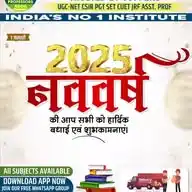
UGC NET JRF notes Professor Adda Institute
June 9, 2025 at 01:59 AM
Professor Adda NET JRF SET:
🔰 Complete Revision Marathon Topic: Development of Education in India (Till 2025)
📘 Useful for UGC NET Paper 1 – Unit 10
📢 PDF available for Paid 💰 Students
📚 Development of Education in Pre-Independence India
📜 Early Initiatives:
🔹 1781: Calcutta Madrasah – by Warren Hastings
🔹 1791: Sanskrit College, Benaras – by Jonathan Duncan
🔹 1800: Fort William College – by Lord Wellesley
🔹 Serampore Missionaries contributed actively to the spread of education
---
📜 Charter Act of 1813:
🔹 Sanctioned ₹1 lakh annually for education
🔹 Funds were not released until 1823
🔹 1817: Grant for Calcutta College – initiated by Raja Rammohun Roy
---
📜 Macaulay’s Minute (1835):
🔹 Promoted Western education through the English medium
🔹 Neglected mass education
🔹 Introduced the Downward Filtration Theory
🔹 1835: Establishment of Calcutta Medical College
* *SUBJECT* Special offer 😍😍 for NET/ JRF/Asst Prof 2⃣0⃣2⃣5⃣ Exam
◾️ *Professors Adda* New Updated edition Till 31 May 2025 Complete syllabus coverage
📚 Theory Notes with Mardarshika Booklet
📚 Unitwise MCQ Bank
📚 Latest PYQs 2024 with Trend Analysis
📚 Model Papers 📑
📚 Amriut facts Revision Notes
📚Test Series 🎯
🔥Premium membership for 1 Year
Paper 1 notes Available 📣
📱 *English Medium Content Head Click Here to get* __https://wa.me/+919216009964?text=Send_me_notes_my_subject_is
👉 *Pdf notes immediate delivery*
Home Delivery Available 🏠 🏠
Best Quality + Best Service 👍💯
📱 *हिंदी मीडियम कंटेंट हेड , क्लिक करे आपको मिल जायेंगे _* https://wa.me/+919257007505?text=Send_me_pdf_ मेरा_विषय_है_
📞 Book your FREE Study plan & talk to our experts
Helpline No --- 76900221111
📜 James Thomson’s Scheme (1843–53):
🔹 Promoted vernacular village education in NW provinces
🔹 Aimed to train personnel for Revenue and Public Works Departments
---
📜 Government Order of 1844:
🔹 English made mandatory for government job applicants
---
📘 Wood’s Despatch (1854) – "Magna Carta of Indian Education"
🔹 Accepted state responsibility for educating the masses
🔹 Rejected Downward Filtration Theory
🔹 Primary education in vernacular, English at higher levels
🔹 Emphasis on:
Female education
Vocational education
Teacher training
🔹 Secular education in government institutions
🔹 Grants-in-aid to promote private initiatives
---
🏫 Major Institutional Developments:
🔹 1847: Engineering Institute at Roorkee
🔹 1849: Bethune School, Calcutta – for women
🔹 1856: Calcutta College of Engineering
🔹 1857: Universities at Calcutta, Bombay, and Madras
🔹 1858: Poona College of Engineering
🔹 Agricultural Institute at Pusa, Bihar
---
📘 Hunter Commission (1882–83) – by Lord Ripon:
🔹 Focused on primary and secondary education
🔹 Primary education in vernacular
🔹 Control transferred to district and municipal boards
🔹 High School bifurcation:
Literary stream – university pathway
Vocational stream – career-oriented
🔹 Highlighted poor female education facilities
---
📘 University Developments:
🔹 1882: Punjab University
🔹 1887: Allahabad University
---
📘 Raleigh Commission (1902):
🔹 Reviewed university education
🔹 Recommendations led to:
📘 Indian Universities Act (1904):
🔹 Government given veto power over university decisions
🔹 ₹5 lakh annually sanctioned for 5 years for university development
---
📘 Other Key Developments:
🔹 1906: Compulsory education introduced in Baroda State
🔹 1913: Central Government declined responsibility for compulsory education
🔹 1917–19: Saddler Commission:
Reviewed Calcutta University
Recommended 12 years of schooling
University entry after intermediate (3-year degree course)
🔹 1919: Education transferred to provincial governments
---
📘 Hartog Committee (1929):
🔹 Reviewed educational progress
🔹 Recommended:
Vocational training after Class 8
Restricted admissions to control dropout rates
---
📘 Wardha Scheme of Basic Education (1937):
🔹 National Conference on Education organized by Indian National Congress
🔹 Recommendations by Zakir Hussain Committee
🔹 Key features:
Activity-based learning
Learning through crafts
English introduced after Class 8
Inspired by Gandhi’s Harijan weekly
---
📘 Sergeant Plan (1944):
🔹 Pre-primary education for 3–6 years age group
🔹 Free, universal, and compulsory elementary education (6–11 years)
🔹 Proposed abolition of intermediate course
---
📘 Post-Independence Educational Developments (1947–2025)
---
🔷 1947–1990: Initial Reforms
🔹 1948–49: University Education Commission (Dr. Radhakrishnan)
🔹 1952: Secondary Education Commission (Mudaliar)
🔹 1964–66: Kothari Commission – 10+2+3 pattern, common school system
🔹 1968: First National Policy on Education – Three-language formula
🔹 1976: Education moved to Concurrent List
🔹 1986: Second National Policy on Education – equity, inclusion, women’s education
🔹 1992: Revised NPE – Launched District Primary Education Programme (DPEP)
---
🔷 2000–2010: Focus on Universal Education
🔹 2001: Sarva Shiksha Abhiyan (SSA) – Universal elementary education
🔹 2005: National Curriculum Framework (NCF) – Emphasis on constructivist learning
🔹 2009: Right to Education Act (RTE) – Free & compulsory education for 6–14 yrs
---
🔷 2011–2025: New Education Policy & Digital Push
🔹 2020: National Education Policy (NEP 2020)
New 5+3+3+4 curricular structure
Target to achieve foundational literacy & numeracy by 2025
Vocational education from Grade 6
Emphasis on mother tongue till Grade 5
Multiple entry-exit options in higher education
Gross Enrollment Ratio (GER) target of 50% by 2035
🔹 2020: PM eVidya, DIKSHA – Integrated digital learning platforms
🔹 2021: NDEAR – National Digital Education Architecture
🔹 2022: Academic Bank of Credits (ABC) – Credit transfer system
🔹 2023: National Digital University established
🔹 2024: PM SHRI Schools launched – Model upgraded govt schools
🔹 2025: Goal to achieve Foundational Literacy & Numeracy under NEP 2020
---
📥 Get all PDFs / Notes & Expert Guidance
📲 English Medium: Click here to WhatsApp https://wa.me/+919216009964?text=Send_me_notes_my_subject_is
📞 Helpline – 76900221111